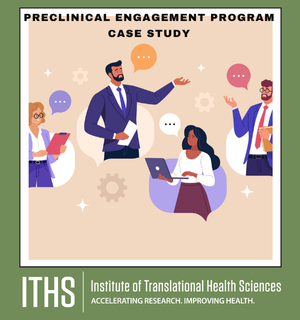Military Service Members’ Needs Open New Line of Preclinical Research – Small Blast TBI Exposure
Preclinical Engagement Program Case Study
 The Challenge
The Challenge
Substantial evidence exists about the impact of large blast impacts (e.g., improvised explosive devices) on military service members, but health officials recorded symptoms in service members with no record of large blast exposure. These service members experienced repeated exposures to small blasts with symptoms that could be related to traumatic brain injury. The US military contacted a researcher specializing in traumatic brain injury (TBI) due to large blast exposure in veterans to look specifically at small blast repeat exposure in enlisted soldiers. Little evidence existed about the impacts of small blast exposure and this was not an area of research for the researcher or his team.
Solution Offered – Community Engagement
In collaboration with military officials, the researcher, who used a mouse model that mimicked large blast TBI symptoms in humans, developed a plan to create a new mouse model. Once the mouse model was established, it was necessary to validate whether the model would mimic the impacts of small blast trauma on military personnel. Military officials were involved as advisors in the research through the entire project to ensure study outcomes were directly relevant to their service members.
Implementation & Results – Outcome
The research team went on base to record the size and frequency of the small blast exposure and primary symptoms of enlisted soldiers to inform development of the mouse model. Model validation procedures included high resolution brain scans of mice and humans with exposure and controls to identify phenotypic changes and monitoring of observable symptoms. Similar brain injuries and behavior deficits were observed in both mice and humans, indicating that small blast repeat exposure does have impacts on soldiers, resulting in TBI.
Impact – Benefits of Community Engagement
Observations by military officials possibly linked to small blast TBI and collaboration with a preclinical researcher with experience in research with model organisms initiated a new line of research. Development of a validated mouse model enables the researcher and their military collaborators to investigate exposure limits, pathophysiology of small blast trauma, and mitigation and treatment strategies. The direct link between service members and this mouse model enables ready translation of research innovations in the lab to improve human health.